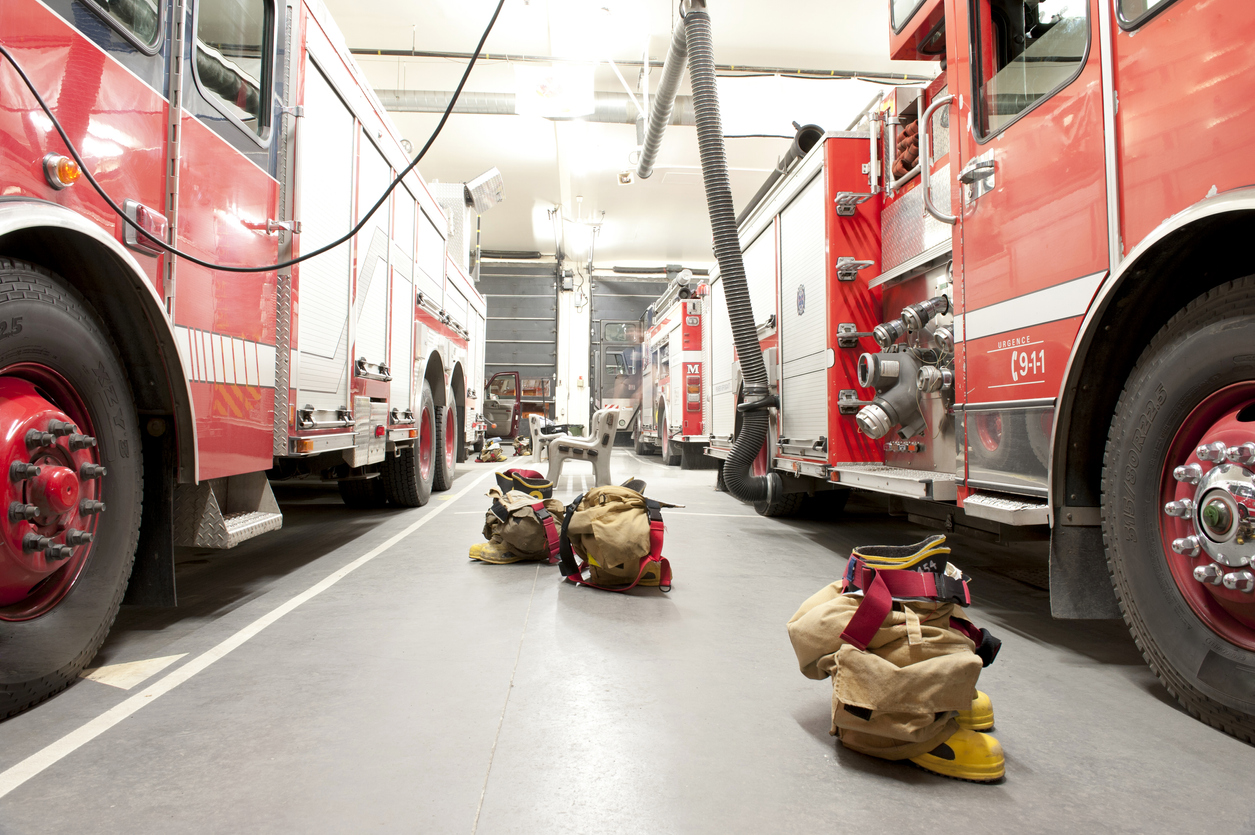
The risks of firefighting are well-known. In addition to the obvious perils of entering a dangerous situation, the contaminants encountered in the field can linger and inflict lasting consequences on firefighters. This is especially true when toxins make their way back to the firehouse, where staff may suffer continuous exposure. It’s imperative that you detect and eliminate these toxins before they cause serious damage, but it can be difficult to know how to do so. Read on if you’re wondering where toxins may be lurking in your department’s firehouse and how to get rid of them.
Locker Rooms
Some of the most pernicious toxins found in firehouses are poly- and perfluoroalkyl substances — also known as PFAS — which can be a byproduct of combustion. It’s no surprise, then, that PFAS are commonly found clinging to firefighters’ gear and lingering in firehouses. Unfortunately, PFAS are associated with disruption of the body’s endocrine system and an increased risk of cancer, and they are commonly detected in firehouse locker rooms. To prevent PFAS from contaminating this area, you should use a high-capacity air purification system and ensure surfaces are regularly cleaned.
Living Areas
Locker rooms aren’t the only area of a firehouse that might be susceptible to environmental toxins. Living areas are also a common hotbed for toxins that are tracked in from the scene of a fire. Living areas are likely to feature upholstery and linens, too, that pollutants may become embedded in. It’s important that these soft surfaces are sanitized properly to eliminate any potential contaminants.
Apparatus Bay
Most of the contaminants found in a firehouse likely originate from the field. Fires are known to generate dangerous toxins, and it’s difficult to prevent these toxins from being carried back to the firehouse. In addition to the contaminants that come from outside the firehouse, though, contamination often originates from within the firehouse, too. This pollution is generated by the diesel exhaust emitted by the fire apparatus, making the apparatus bay one of the most highly contaminated areas in a fire station.
Ambient Air
Unsurprisingly, studies have found that the overall quality of air in fire stations is dangerously low. While toxins can certainly be concentrated in specific areas of the firehouse, it’s clear that contamination is a widespread issue that affects the entire building. Air purification and cleaning routines can only do so much to combat the problem, but many modern fire stations have found a new solution that may substantially improve firehouse air quality. Implementation of a negative pressure HVAC system can manipulate airflow to prevent the spread of toxins from the apparatus bay. This promising innovation is poised to make firehouses around the world a safer place for firefighters.
About Provident Fire Plus
At Provident Fire Plus, we offer custom-tailored packages to best protect firefighters and volunteer firefighters. We understand the risks that emergency response teams are subjected to on a daily basis, and have worked to serve these dedicated professionals for over 87 years. For more information about our products and policies, we invite you to contact our experts today at (855) 201-8880.

